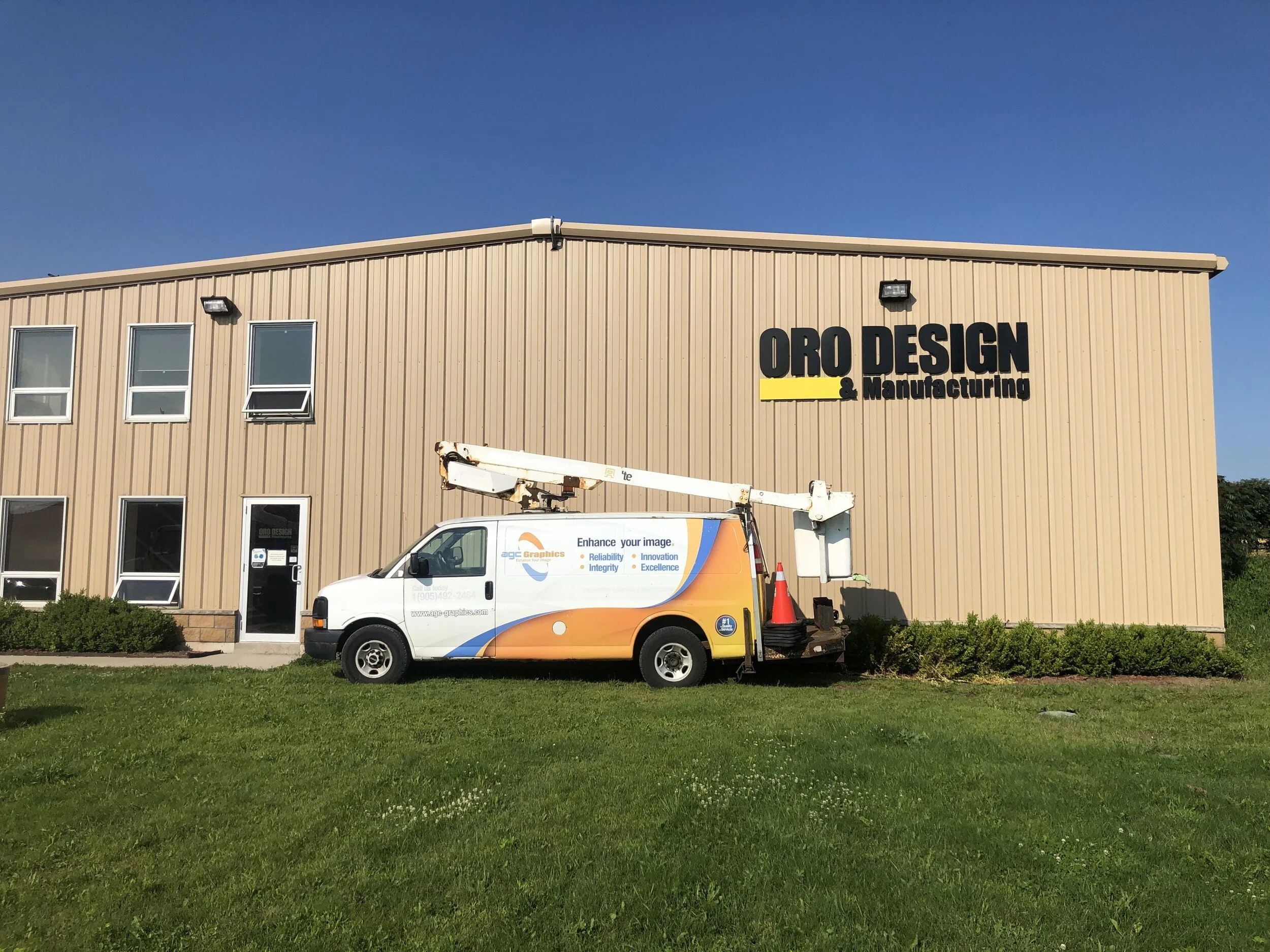In a world overflowing with digital ads and social media noise, your business sign remains one of the most powerful and lasting touchpoints of your brand. Before customers read your website, shake your hand, or try your product, they’re already forming opinions—based on what they see outside your building.
The right signage doesn’t just say who you are—it communicates how trustworthy you are. From colour psychology to typography, every design decision influences whether people feel confident stepping through your door. This is where the science of design meets the art of trust-building, and why the materials, placement, and tone of your sign matter more than most business owners realize.
Here’s what we’ll cover in this post:
With over a decade of experience in business signs - from design and manufacturing to installation and maintenance - we specialize in helping bring vision to life, including dynamic digital signs.
1. The Psychology Behind Sign Design
Every day, people are bombarded with thousands of visual messages—from digital ads and store displays to billboards and street signs. Amid that sensory overload, your business sign has only seconds to make a lasting impression.
According to research in environmental and cognitive psychology, our brains process images 60,000 times faster than text and form opinions about visual stimuli within milliseconds. That means your sign isn’t just announcing your business - it’s communicating your values, reliability, and competence before a customer even steps inside.
A well-designed sign taps into what psychologists call “cognitive fluency”—how easily information is processed by the brain. When a sign looks balanced, legible, and aligned with expectations for its industry, viewers experience comfort and clarity.
Their brains interpret that fluency as trustworthiness. On the other hand, cluttered layouts, jarring colour contrasts, or inconsistent branding create mental friction that subconsciously raises doubt.
Visual Hierarchy and Eye Movement
Design psychology also considers how the human eye scans a visual field. People typically read signs in predictable patterns—often from top to bottom and left to right, or following the most prominent shapes and contrasts.
Strategic placement of your business name, logo, and key messaging ensures that the viewer’s eye moves naturally across your sign without confusion or effort. Smooth visual flow equates to professional reliability.
Environmental Context
The setting of a sign plays a vital role in perception, too. A vibrant, modern sign might feel right at home in a tech district, while the same design could feel out of place in a heritage downtown core.
Signs that complement their surroundings demonstrate attention to detail and respect for the environment, both of which reinforce a customer’s sense that your business is thoughtful and trustworthy.
Emotion and Memory
Finally, trust isn’t just logical - it’s emotional. The emotional tone of your signage - whether warm and welcoming or sleek and professional—creates associations that linger in memory. Repeated positive exposure to consistent, well-designed visuals leads to familiarity bias, a psychological phenomenon where people instinctively prefer what feels familiar and consistent. In branding, that preference translates directly into loyalty and repeat business.
In short, effective signage bridges psychology and design. It works not only because it’s attractive, but because it respects how the human brain interprets and remembers visual information.
By applying these principles, AGC Signs helps businesses turn first glances into lasting trust.
2. Fonts, Colours, and Materials: The Trust Equation
Every element of a sign contributes to the message your brand sends—whether you intend it or not.
Fonts
Typography conveys personality:
Serif fonts (like Times New Roman) evoke reliability and tradition—ideal for financial firms and law offices.
Sans-serif fonts (like Helvetica or Arial) suggest modernity, clarity, and accessibility—perfect for tech startups or clinics.
Script fonts, when used carefully, create a sense of elegance and exclusivity for boutiques or spas.
Colours
Colour psychology is one of the most powerful tools in design:
Blue inspires trust, calm, and professionalism.
Green signals balance, health, and growth.
Black and gold suggest sophistication and premium quality.
Red creates excitement and urgency—but must be used strategically to avoid tension.
Materials and Finishes
The texture and depth of your signage influence perceived value:
Brushed aluminum or stainless steel projects durability and permanence.
Acrylic or dimensional letters add modern flair.
Wood and stone evoke warmth and authenticity.
Even the smallest detail—like LED illumination or the sheen of a matte finish—can subtly change how your business is perceived.
3. Real-World Examples of Design That Builds Trust
When you think of brands that people instinctively trust, their signage almost always plays a role. It’s not accidental - it’s carefully engineered to evoke confidence, reliability, and emotion.
Take Starbucks, for example. Their signature green isn’t just a random hue - it was chosen for its associations with calmness, balance, and nature. The round logo design, warm lighting, and consistent global placement of signs all work together to make the experience feel familiar no matter where you are. You may not consciously analyze the sign, but your brain immediately recognizes it as inviting and dependable.
Apple takes the opposite visual approach yet achieves the same effect. Its signage relies on stark minimalism: clean lines, ample negative space, and the use of metallic or white materials.
The result is a visual expression of precision and innovation. Walk past an Apple Store, and you know instantly that what’s inside will be refined, modern, and expertly made — a direct reflection of how they want you to view their products.
TD Bank and Scotiabank, meanwhile, use bold, high-contrast colors and clear typography to reinforce stability and authority. The simple, easily legible design communicates financial security - a nonverbal promise that your money is in good hands.
These principles apply to local businesses just as much as global brands.
A dental clinic that upgrades from a fluorescent box sign to backlit channel letters with soft blue hues instantly communicates professionalism and care - small visual cues that can reduce patient anxiety before they even walk through the door.
A boutique retailer using matte black signage with gold dimensional lettering conveys sophistication and exclusivity, enticing customers to step inside for a premium experience.
A construction firm that chooses bold block lettering in durable aluminum materials sends a message of strength, reliability, and craftsmanship — even before a conversation starts.
Businesses that invest in thoughtful, psychologically informed signage report more consistent walk-in traffic, improved brand recall, and stronger customer confidence.
The science behind those results is simple: people trust what feels intentional, consistent, and aligned with the story your brand wants to tell.
4. Why It Matters More Than You Think
It’s easy to think of signage as just another business expense — a necessity for visibility rather than a strategic investment. But modern research shows the design of your signage can have a direct, measurable impact on customer behavior, influencing whether someone enters your store, remembers your brand, or chooses a competitor.
A study from the University of Loyola, Maryland, found that colour alone can improve brand recognition by up to 80%, while consistent use of design elements like font, shape, and lighting increases brand recall and trust over time.
Similarly, people form an impression about a product, company, or environment within 90 seconds—and up to 90% of that judgment is based on colour alone.
That means your sign isn’t just decoration- it’s a psychological shortcut. Customers subconsciously interpret polished, cohesive signage as evidence of professionalism and reliability. Conversely, outdated, poorly lit, or visually inconsistent signs can create doubt, even before they’ve read your name or tagline.
Imagine walking into a shopping plaza where one storefront features crisp, evenly illuminated channel letters, while the neighbouring sign is faded, peeling, or misaligned.
Even without realizing it, most people will instinctively gravitate toward the business that looks more put together. This is design psychology in action—our brains are wired to seek order and consistency as indicators of safety and quality.
The impact extends beyond walk-in traffic. Well-executed signage supports every part of your brand ecosystem - from your online presence to your printed materials. When customers see a cohesive design language across platforms, it reinforces recognition and credibility. The more often they encounter that visual consistency, the more familiar- and therefore trustworthy- your brand becomes.
5. Building Trust Through Strategic Signage
Designing a sign that inspires trust isn’t about flash or trend—it’s about intention. Every font choice, colour contrast, and material selection should serve a psychological purpose: to make people feel confident that your business is legitimate, capable, and aligned with their expectations.
Strong signage bridges two worlds. It’s creative, expressing your brand’s character and story, but it’s also strategic, guided by how people perceive and process visual information. A well-balanced design speaks clearly without shouting, looks modern without chasing fads, and fits its environment in a way that feels both natural and distinctive.
At its core, effective signage reflects the same qualities that build trust in human relationships—clarity, consistency, and authenticity. When your visuals reinforce those traits, customers are more likely to engage, remember, and return.
For businesses, this means viewing signage not just as a finishing touch, but as a foundational part of the customer experience. When design is rooted in psychology and executed with care, a sign does more than mark your location—it becomes a quiet ambassador for your brand’s integrity.
At AGC Signs, we don’t just build signs - we design trust assets.
Our team understands that colour theory, spatial design, and material choice can make the difference between being noticed and being remembered. Whether you need a storefront sign that exudes sophistication or a monument sign that communicates authority, we approach every project with a designer’s eye and a strategist’s mindset.
By aligning design psychology with your business goals, we help you build signage that attracts attention and inspires confidence.
Your sign is your silent salesperson- make sure it’s saying the right thing.
Upgrade your business signage today with AGC Signs and transform first impressions into lasting trust.
We recently purchased three signs for our business and dealt with Suzanne throughout the process. The service provided was excellent and professional. The installation went perfectly as well with Zeina. We recommend AGC Signs!
- Over The Top Gaming









